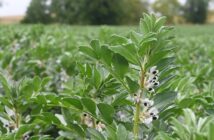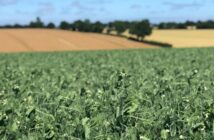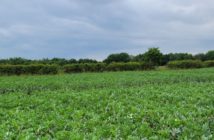“The market is getting used to the fact that there has been an increase in supply and trade is adjusting accordingly. Optimism remains for crop 2015 and for 2016,” comments Roger Vickers, Chief Executive of PGRO.
“The next few weeks is the ideal time to start sowings of winter beans – drilling is under way for 2016 crop with good seedbeds and, in many cases, pre-emergence weed control applied.
“With some RL trials still to be harvested in North Northumberland, it is possible that there are also commercial crops of beans yet to be harvested. It has been an unusually late harvest for beans in 2015. There are reports that one or two occasional crops have been abandoned.”
Looking at domestic markets, Chris Collings, President of BEPA, comments that feed bean prices have fluctuated in October but have been trading at around £133 – £135 delivered, a premium over November wheat of approximately £20/t.
“Buyers remain interested in the feed market. The main issue for many has been moisture content. With growers offering at over 15% moisture, problems for storage arise, and the need to dry down to 15% is imperative for buyers in any market sector. Higher moistures will trade – but at a discount.”
For Human Consumption beans, hard currency availability remains a problem for bulk shipments to Egypt and appears likely to persist through the season. Values where export opportunities arise carry a premium of circa £20-22/t over feed beans (Circa £155/t delivered).
Prices, market and political issues emphasise the need for growers to focus on maximising yield and quality and retaining the quality in storage.
Marrowfat pea values of £275 delivered (£300/t delivered for the very best quality) command interest in exports from the Far East. This market is driven by a combination of doubts about other supply regions, logistical issues and an awareness and preference for UK quality when it is available.
Optimism surrounds this crop with a feeling that quality is good and that increasing demand and supply are closely matched. Only a small carryover is likely before the arrival of crop 2016 indicating that the position is unlikely to change in the next 12 months.
Large blue peas are currently harder to place. Internationally the crop has yielded well and the traditional feed market has still to return to the crop following years of undersupply and movement away. Good quality large blue peas are trading at around £40 over feed peas which in turn trade at a discount to feed beans (there being fewer processor takers) making their value circa £165 delivered for top quality produce. With improved supply and a return to more traditional market values for these crops, the UK is a better position to compete for export markets and for longer term market development.



